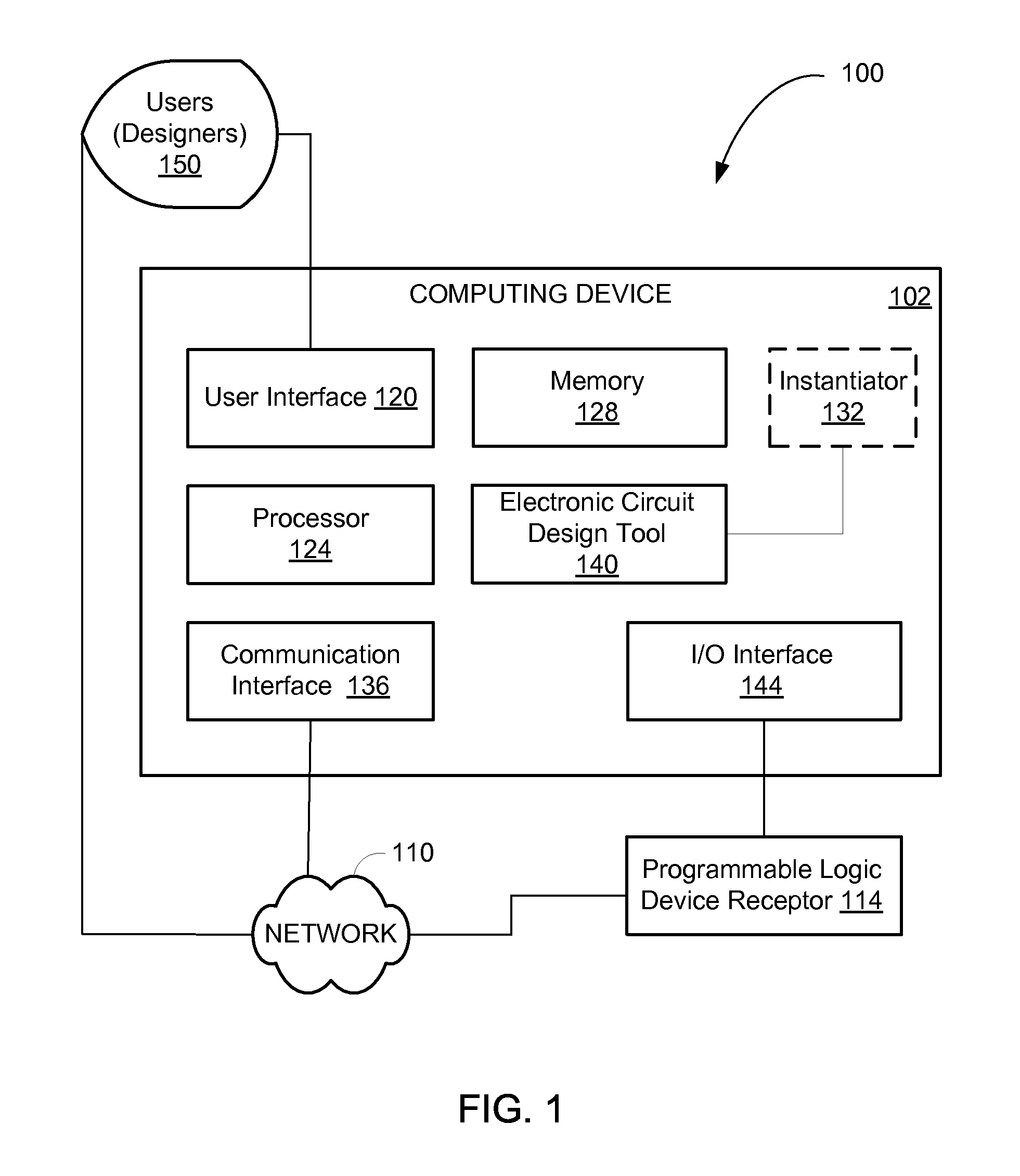System for memory instantiation and management
a memory instantiation and management technology, applied in the field of programable logic devices, can solve problems such as confusion, inability to know and difficulty in determining whether the tools will infer bram (dedicated logic) or distributed
- Summary
- Abstract
- Description
- Claims
- Application Information
AI Technical Summary
Benefits of technology
Problems solved by technology
Method used
Image
Examples
Embodiment Construction
[0022]By way of introduction, the present disclosure relates to the instantiation of memory structures or blocks on programmable logic devices (PLDs). A memory management system, discussed in detail below, may automate the choice of which of a number of memory structures should be used, and if more than one is needed, to include the addressing and data multiplexing required to manage the instantiated memory in a way transparent to the end user of the PLD, regardless of the number of memory structures required. The end user may be a designer that may reconfigure the PLD without needing to understand the lower-level PLD design and without need to directly reconfigure the memory structures. The instantiation and memory management required by any given PLD design may be developed as part of the logic generated at the time of compilation of hardware description language (HDL) code in a system used to design, instantiate, and configure the logic blocks and interconnects of the PLD.
[0023]A...
PUM
 Login to View More
Login to View More Abstract
Description
Claims
Application Information
 Login to View More
Login to View More - R&D
- Intellectual Property
- Life Sciences
- Materials
- Tech Scout
- Unparalleled Data Quality
- Higher Quality Content
- 60% Fewer Hallucinations
Browse by: Latest US Patents, China's latest patents, Technical Efficacy Thesaurus, Application Domain, Technology Topic, Popular Technical Reports.
© 2025 PatSnap. All rights reserved.Legal|Privacy policy|Modern Slavery Act Transparency Statement|Sitemap|About US| Contact US: help@patsnap.com



